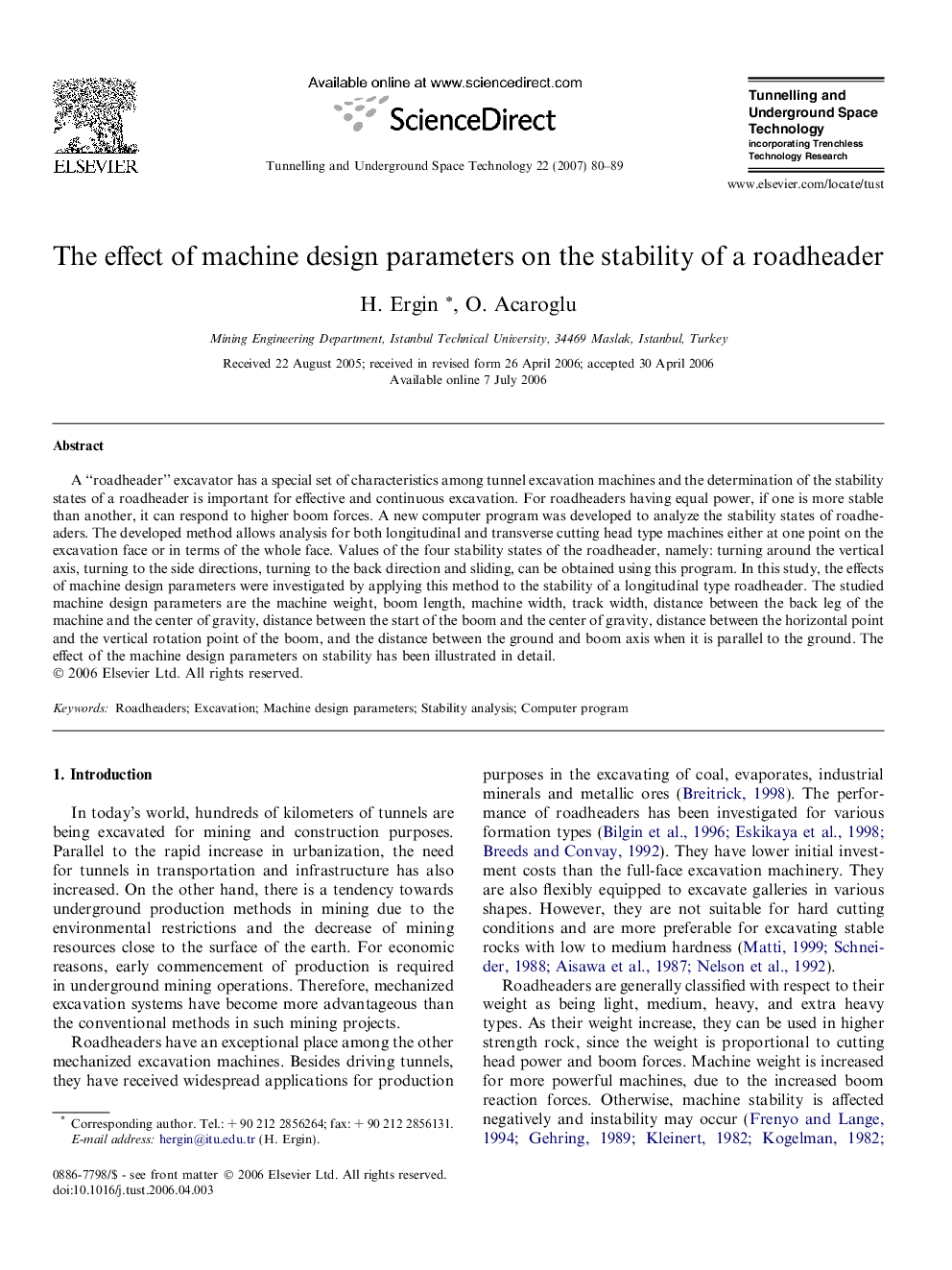| Article ID | Journal | Published Year | Pages | File Type |
|---|---|---|---|---|
| 310981 | Tunnelling and Underground Space Technology | 2007 | 10 Pages |
A “roadheader” excavator has a special set of characteristics among tunnel excavation machines and the determination of the stability states of a roadheader is important for effective and continuous excavation. For roadheaders having equal power, if one is more stable than another, it can respond to higher boom forces. A new computer program was developed to analyze the stability states of roadheaders. The developed method allows analysis for both longitudinal and transverse cutting head type machines either at one point on the excavation face or in terms of the whole face. Values of the four stability states of the roadheader, namely: turning around the vertical axis, turning to the side directions, turning to the back direction and sliding, can be obtained using this program. In this study, the effects of machine design parameters were investigated by applying this method to the stability of a longitudinal type roadheader. The studied machine design parameters are the machine weight, boom length, machine width, track width, distance between the back leg of the machine and the center of gravity, distance between the start of the boom and the center of gravity, distance between the horizontal point and the vertical rotation point of the boom, and the distance between the ground and boom axis when it is parallel to the ground. The effect of the machine design parameters on stability has been illustrated in detail.
